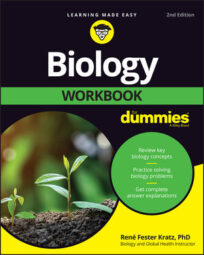Plants use a special tissue called phloem to transports sap — a sticky solution that contains sugars, water, minerals, amino acids, and plant hormones. Sap moves through phloem via translocation, the transport of dissolved materials in a plant. Unlike the xylem, which can only carry water upward, phloem carries sap upward and downward, from sugar sources to sugar sinks:
-
Sugar sources are plant organs such as leaves that produce sugars.
-
Sugar sinks are plant organs such as roots, tubers (underground stems), and bulbs (swollen leaves) that consume or store sugars.
Scientists call their explanation for how translocation works in a plant’s phloem the pressure-flow hypothesis. The figure illustrates this hypothesis, the steps of which are:
-
Sugars, produced within sugar sources, are loaded into phloem cells called sieve tube elements, creating a high concentration of solutes within the sieve tube elements.
-
Water enters the sieve tube elements by osmosis.
During osmosis, water moves into the areas with the highest concentration of solutes (in this case, sugars).
-
The inflow of water increases turgor pressure at the source, causing the movement of water and carbohydrates through the sieve tube elements toward a sugar sink. (Turgor pressure is pressure from the fluid within the plant cell that pushes against the plant cell wall.)
You can think of this step like turning on a water faucet that’s connected to a garden hose. As water flows from the tank into the hose, it pushes the water in front of it down the hose.
-
Sugars are removed from cells at the sugar sink, keeping the concentration of sugars low.
As a sugar sink receives water and carbohydrates, turgor pressure builds. But before the sugar sink can turn into a sugar source, carbohydrates in the sink are actively transported out of the sink and into needy plant cells. As the carbohydrates are removed, the water then follows the solutes and diffuses out of the cell, relieving the pressure.
Sugar sinks that store carbohydrates can become sugar sources for plants when the plants need sugar. Starch, a complex carbohydrate, is insoluble in water, so it acts as a carbohydrate storage molecule. Whenever a plant needs sugar, like at night or in the winter when photosynthesis doesn’t occur as well, the plant can break down its starches into simple sugars, which allows a tissue that would normally be a sugar sink to become a sugar source.
Because plant cells can act as both sinks and sources, and because phloem transport goes both upward and downward, plants are pretty good at spreading the wealth of carbohydrates and fluid to where the plant needs them. As long as a plant has a continuous incoming source of minerals, water, carbon dioxide, and light, it can fend for itself.
![[Credit: Illustration by Kathryn Born, M.A.]](https://www.dummies.com/wp-content/uploads/362056.image0.jpg)
Practice your understanding of sugar movement in plants by answering the following questions.
Use the following terms to describe the scenario in questions 1-3. Each question has two correct answers.
a. Sink for sugar
b. Source for sugar
c. Low turgor pressure
d. High turgor pressure
-
A rapidly growing plant bud
-
A healthy plant leaf on a sunny day
-
A growing plant root
-
A young plant embryo is just beginning to grow out of its seed. It’s still underground, so no light can reach it. The embryo is surrounded by starch that was placed in the seed by the parent plant. Use the pressure-flow hypothesis to explain how sugar can move from the seed into the cells of the plant embryo.
The following are the answers to the practice questions.
-
The answer is a. Sink for sugar and c. Low turgor pressure.
-
The answer is b. Source for sugar and d. High turgor pressure.
A healthy plant leaf on a sunny day does lots of photosynthesis.
-
The answer is a. Sink for sugar and c. Low turgor pressure.
A root growing through the soil can’t do photosynthesis.
-
The embryo needs sugar to grow, but it can’t make it for itself. So it’s a sink for sugar and has low turgor pressure. Enzymes break down the starch stored in the seed, converting it to sugars. This makes the seed a source for sugars. The high concentration of sugar in the seed attracts water through osmosis, resulting in high turgor pressure. The pressure forces fluid carrying sugar to move from the seed to the embryo. The embryo’s cells snatch up the sugars and use them to grow.

